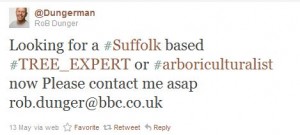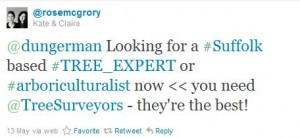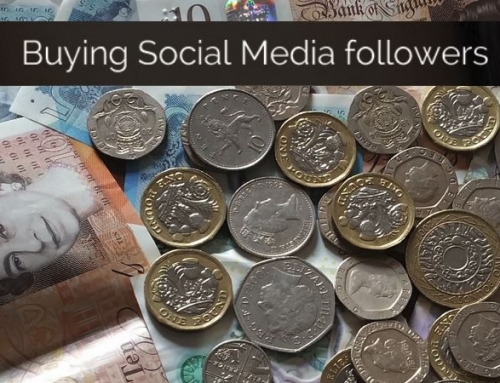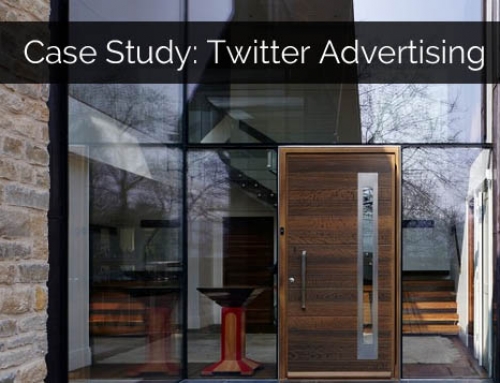Today we’re looking in detail at one aspect of using Twitter to grow your business: gaining referrals through networking.
There is a LOT of business networking done on Twitter.
Face to face networking, whilst it can work very well for some types of business, can also be time consuming and / or expensive; and there’s a school of thought which suggests that some of the busiest and most successful businesses are more likely to be hard at work on projects than taking a couple of hours out to make new connections. Keeping up with contacts or sending out help requests via social media, on the other hand, only takes a few moments during a coffee break.
People increasingly look to social networking for help
Networks of all kinds have always been used to find partners and suppliers, of goods or of services; a word of mouth recommendation is usually preferable to the “sticking a pin in the Yellow Pages” type alternatives. Online networks are a natural place to start, for the huge community of businesses now using them.
For whatever reason (speed and reach no doubt come into it) we see far more requests for recommendations on Twitter than on Facebook or even on LinkedIn. In the last couple of weeks, we’ve recommended, or have been recommended to others, for probably four or five requirements.
If you’re not there, you don’t exist
But, businesses who haven’t got involved with Twitter are going to miss out. Here’s why:
We see a tweet from someone we follow, or via a search set up to spot referral requests:
 Now, let’s say we know a handful of companies in that line of work. We want to help the person concerned and also those companies who are looking for clients, but realistically we’re in the middle of several projects so can’t spend a lot of time on this.
Now, let’s say we know a handful of companies in that line of work. We want to help the person concerned and also those companies who are looking for clients, but realistically we’re in the middle of several projects so can’t spend a lot of time on this.
So, of those companies, one of them is on Twitter and the others aren’t. To send the referral to the one who is, we just reply
To do this only takes a few seconds, and the Twitter bio will give all additional information needed – their business name, plus a link to their website which should include all their contact details.
To involve the company who isn’t on Twitter, we’re going to need to supply all those contact details ourselves, so first we have to find them; then we may well need to send either multiple Direct Messages or even an email, because a name, email address and website details won’t fit in a Tweet. Now, there are times when that might happen but let’s face it, if you’re making it hard for people to refer to you, you’re substantially decreasing the odds.
So, here are our top tips for getting referrals on Twitter.
1. Obviously, BE THERE! If you’re not using Twitter at all, you’re missing out on a whole conversation that’s taking part amongst businesses – both local to you and further afield.
2. Be timely. If you have an account but don’t really “get” Twitter, and consequently only log in once a week, that’s not great. Your contacts will know that it usually takes you days to respond to a message, and that will impact on their willingness to refer work to you – after all, recommending someone who might only get back once the project’s completed, doesn’t actually help very much! If you’re finding it hard to keep on top of Twitter, there are lots of tools around to help you do this more efficiently.
3. Have impeccable manners. Not just in the area of recommending, but all the time when you’re using Twitter. If someone responds to a question or comments on something you’ve said, acknowledge or thank them. If someone retweets your stuff, thank them. And it goes without saying, if you get a recommendation…yeah. You know what to do.
4. Be competent. We’ve also seen situations where we’ve made a link between someone offering work on Twitter and a suitable business, and that business has then totally screwed things up by making basic mistakes when responding – for example, mis-spelling the Twitter handle or even forgetting to put it in at all. Result: they don’t get the work, the business offering it wonders what the hell is wrong with them for not following up on a clear lead, and we decide not to get that business involved again. If you’re on Twitter but not using it confidently, get some training.
So, if lesson one is that your business has to be visible on Twitter, a big lesson two is that you also need to know what you’re doing, otherwise you could be inadvertently making your business look bad to potential customers.
5. If you get involved in “offline” networking, try to find out whether the businesses you meet use Twitter, and if so, connect with them soon after you meet. Face to face plus online conversations mutually strengthen the relationship, so keeping in touch on Twitter can accelerate the impact of your offline networking and vice versa. If you’re not on Twitter now, you might be surprised by the extent to which those local networks you attend have an online “sub group” of Twitterers, who are exchanging information you’re currently not even aware of!
Have you won business after a Twitter referral? Do you make recommendations online? Feel free to leave a comment below.








thanks -useful guidance
Thanks Marion, glad you found it interesting.